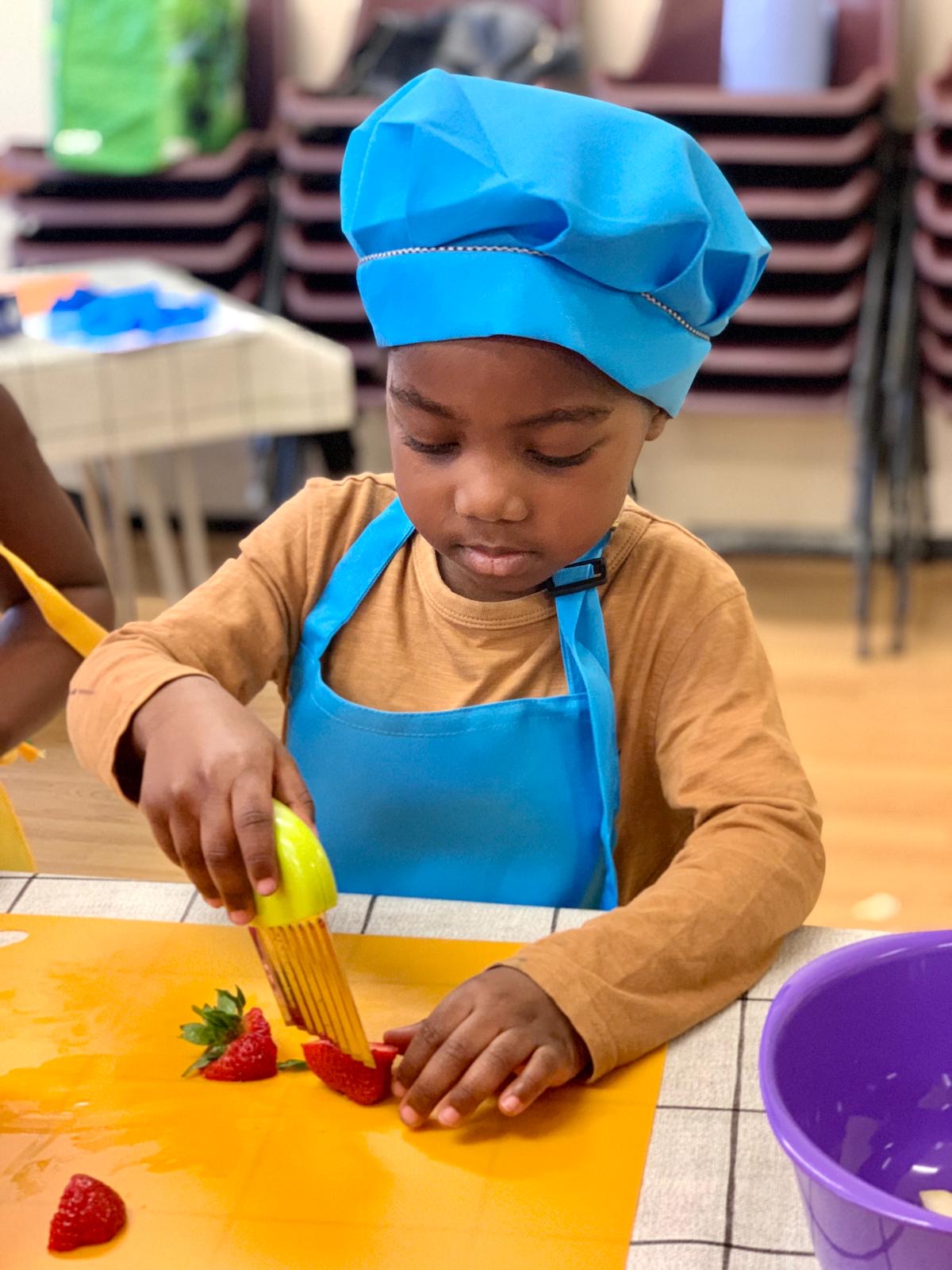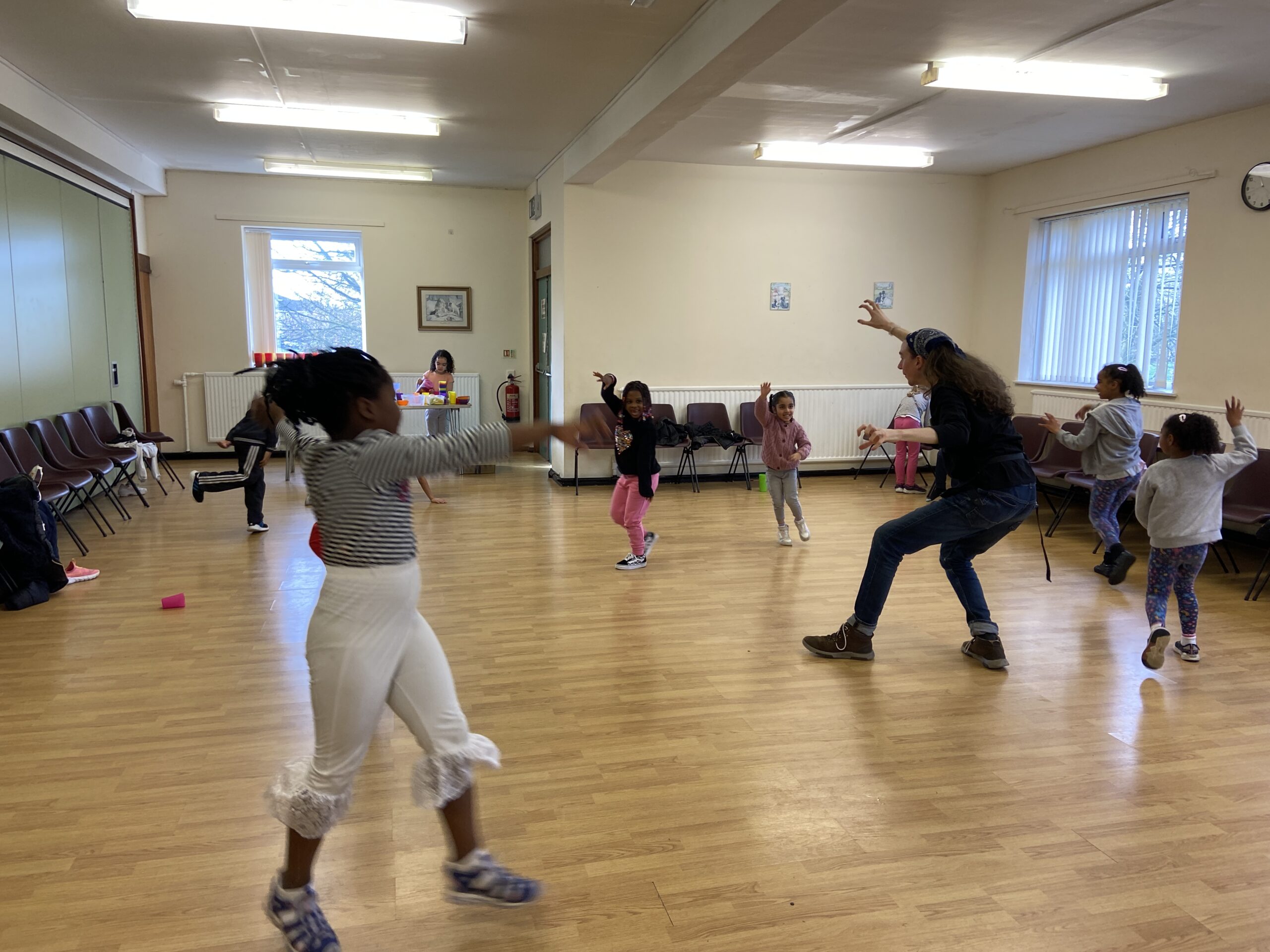What makes a community arts session fantastic for children?
Curiosity Club is a programme of creative play sessions that aim to build children's confidence in all of the varied forms of their imagination. This includes crafting and building, dancing and singing, acting and cooking, with sessions that involve specialist activities with guest artists as well as our in-house team of experienced facilitators, amazing interns and fabulous volunteers. We want our participants to be welcomed, feel safe and imaginative, as well as building emotional, communication and artistic skills in an active and healthy environment.
Our team draws on a deep and broad background from work in education, performing arts, childcare and craft play – through the process of training new staff we have uncovered some key learning points for holding creative community sessions for children.

Key learning includes:
Providing food
Having a balanced and varied range of food, provided at the start and throughout the day transforms behaviour for the better. We really quickly found how much providing breakfast could improve how well children could focus on the activities in the room without getting overwhelmed - and providing a regular and healthy range of snacks and lunch through the day means that children are fully fuelled up to stay active all day.
Quiet spaces
Children really respond well to having a quiet and safe room as an option when activities either create stress or don't match how they want to play. This is particularly relevant to the many children who are sensitive to auditory stress, like autistic children, but is just as helpful with a neurotypical child who is maybe emotionally overwhelmed and just needs to rest and reset before heading back into the main room. We also provide ear defenders for children who want to stay in the main creative space but just need the sound of 30 children having fun muffled.
Managing transitions
Transitions, like the end of activities, or lunch time, can often be challenging but are made so much easier by communicating these changes in both medium term (i.e. at the start of the day, so children know what happens in the day) and in the short term (in the 5-10 minutes before an end of the session). Explaining what behaviour is expected of them (e.g. letting them know that they have 5 minutes before they need to help everybody pack away) also makes a difference - after all, how are people meant to know how to act for the first time unless they've been told? This clarity helps reduce anxiety, and therefore listlessness and frustration.
-
- Taking the time to make sure children feel listened to after any change also really helps them trust the team – we often ask them how they are, or what energy they have or what weather they feel like, both at the start and at the end of sessions.
Agreeing shared values of behaviour
In our sessions, we invite the children to tell us how they want to behave. This is how our day always starts, after breakfast and a quick introductory game. We all work together to agree a list of values, which guide us in how we want to be in the space, how we want to behave and how we want to treat others and be treated. Children will decide on lots of really beautiful values, asking the group to be compassionate and caring, but do sometimes need guiding to find positive statements (e.g., 'we should try to be good listeners', rather than 'we shouldn't interrupt') or help handle particular anxieties in a constructive way.
Let one thing happen at one time
Attention is more focused if only one activity happens in a room. There could be acceptable variations or versions of the same activity, as we love to respond to children and accept offers of what they think we should do - but if two activities lead to conflicting attention, then it can be challenging for them to be run in the same room.
Adapt your communication and plan for each child
It's great to think through implications of different communication needs, before making adjustments to the needs of individual children. For example, if a child loses the ability to speak when upset, then typical verbal communication isn't going to work well to calm them down. However, planning an adjustment like a time-out card, that the child can show in the event they become overwhelmed and unable to talk, means that they can head to the quiet space and be removed from the situation causing them stress.
Keep focused and put less out
Limiting what materials or activities are immediately put out can encourage more intense creativity and focus. Though we love having a pile of repurposed materials in our craft room, as having a flexible option for play gives an achievable way-in to creative play for lots of children, we keep this confined to a particular space, leaving the rest of the space clear. The best engagement we had in our craft play sessions came when it was extremely clear, just from looking at what materials were out, what we would be making. There can always be an option to bring something out later, like a cardboard box or a certain kind of tape, but too many choices from the beginning can overwhelm.
Check in with guardians
Good communication with parents and carers is key. Keeping our check-in systems calm and conversational, with enough space and staff to talk to guardians as they pick-up and drop-off helps foresee issues before drop-off and reassure parents at pick up.
Managing disagreements practically
Children, like adults, will need help communicating between each other. For instance, we want to encourage play with repurposed objects, which means sometimes a box will never fully be finished playing with. It also means it can get difficult for children to know which items are someone else's finished creations and which are available to play with – so we need particular strategies to get children to respect each other's work, such as putting their creations in a specific area next to a piece of paper with their name on, all of which needs explaining and revisiting.
Feedback
At the end of every session we ask children about their experience of the day and we use their feedback as well as reflections by the team to shape and develop future sessions.
Conclusion
In our work, we always want to centre the child and their voice and facilitate opportunities for them to discover their own creativity. This quite often means working hard to prepare and respond, putting things in place that support their participation and remove barriers to comfort, learning and fun.
We are always learning, and this learning is a collaborative process between our team, the children and their families. We are always inspired by the imagination and creativity of the children we work with, and are excited to keep on honing these sessions to make them as good as they can be.
***

If this article's sparked any thoughts, or if you have any questions - why not reach out? Head to our contact us page to reach us by email, phone, or WhatsApp.
